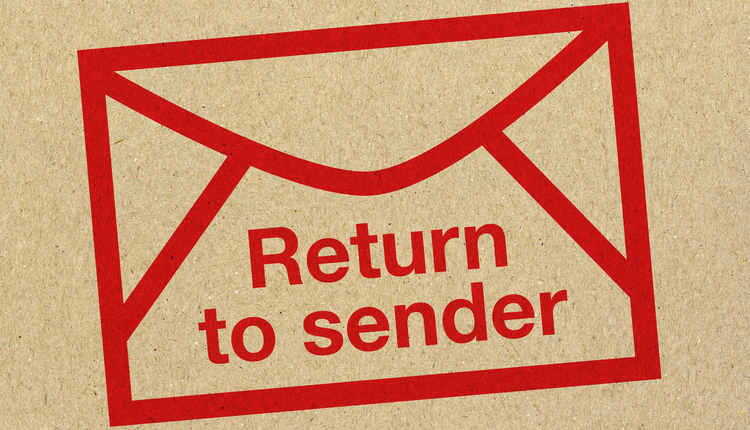It is no surprise to anyone that the mail mix coming into organizations is changing. This means new best practices are being put in to place to better handle the increase (which, by the way, is predicted to continue to grow for years to come) occurring in both accountable and non-accountable flats and packages.
Accountable mail has always been a challenge. Regardless of your organization and industry, the requirements and expectations have always been rather similar. Recipients want their piece delivered to them in a timely manner. Mail centers strive to do this, but the chain of custody is an added burden to be absorbed in the process. The desire to provide exceptional service, while admirable, cannot take priority over making sure the piece gets delivered to the right person, which means that some sort of chain of custody documentation must be recorded. Data that shows the delivery was made properly and securely is imperative.
In peak volume periods, organizations fall into practices that are neither secure nor controlled, which is dangerous. None of us knows the contents of any of these pieces. One common practice is to place the incoming pieces on shelving in an area outside of the mail center and notify recipients their piece has arrived. The pieces are recorded on manual logs that are left with the packages (often on clipboards) and then the honor system kicks in. Recipients go to the shelves and sort through the pieces until they locate theirs. They (theoretically) sign the log in the proper place acknowledging they took the piece and leave. The packages are all considered delivered when they are all gone, but no one knows for sure who took what — and that is a problem.
The issue here is not that people are dishonest. To a large degree, they are honest. Systems like this one are just not secure. Anyone (organizational employee or not) walking by the shelving can take a piece without consequence, and the mail center is the area held accountable. The carriers who deliver these packages all know the pitfalls, and that is why they have us sign for each delivery they make.
Mail centers today must be equipped with chain of custody tools and technology that go beyond the traditional handwritten logs. These solutions range from the handheld scanners like those the delivery carriers have, to smart lockers that can integrate with these scanners to automate the processing and provide chain of custody recording. These technologies can range in functionality (and price) based on the needs of the organization. The less robust systems capture the individual package information on receipt and delivery. This data allows the mail center to know every handling step the package went through once they took possession from the delivery driver.
The rest of the processes leading to delivery are not automated. Notification to the recipient (which is often a manual email), the actual delivery, locating the recipient to coordinate signature, knowing who can act as a delegate and when, accessing a current active employee database to verify that the package truly belongs at the organization or address, and knowing which packages are aging beyond a reasonable and acceptable time period (expiration time) to facilitate possible return are often still manually controlled. Traditional mail centers are usually “labor-based.” Organizations today cannot afford to just add labor to manage the increasing volumes. It is expensive and addresses none of the issues associated with these manual processes.
How Do We Resolve the Issue?
Technology can resolve all these issues, streamline the process, optimize labor utilization, and provide the necessary data to truly manage the volumes effectively. Smart lockers are a great technology that organizations should consider. The workforce today is more mobile and often not tied to a location or schedule as they perform their work. Today’s worker requires access to their incoming pieces when it is convenient for them. Staffing a mail center service counter 24/7 is not realistic or a good use of resources. Instead, smart locker technology allows organizations to receive pieces in, sign for them, and automate the rest of the process. After receipt, the piece is processed in the mail center and placed into a locker for the recipient. The notification containing a locker number, locker location, and access code is sent via text, email, or other method, based on the preference of the recipient. The system then starts the clock on an organizationally defined expiration time, the recipient comes to the locker, picks up their piece, and that transaction is recorded into the database in the event any questions arise. The now-empty locker is flagged as “available” and the process can start again.
This is not some crazy, “pie in the sky” dream. This technology is available and in use today. Organizations must know that the benefits of this technology go way beyond the labor savings, since these alone will not justify these technologies. Not because they are enormously expensive but because labor is only a small part of the issue. Security, access, actionable data, durability, flexibility, and enabling workers across the organization to be more productive are the real value of these systems. Integrating these systems with employee databases, IT systems, facilities management systems, and almost any system that can provide an open API is the true benefit. Most of these systems are disparate, and this technology can bring them together to enable workers to conduct business efficiently and on non-traditional schedules. Finally, these systems are modular in terms of configuration and function. You can start with a smaller configuration and add to it when the data shows that more are needed. They can be placed in the same or different locations/sites. Function is directly correlated to the choice of software, which is often defined by an organization’s requirements.
This technology can deliver the same efficiencies for non-accountable pieces. These can be processed through the same workflows (each piece can be assigned a unique code) and the process can move forward from there. At the very least, the labor processing these through the more traditional and manual processes can be more efficient because they have more time to perform these functions as a result of the process improvements the technology introduced. Things like traditional mail receipt and delivery processing (including mystery mail) can be improved — mystery mail particularly because the technology has access to and interfaces with an accurate company database that they can use to try to identify where these pieces belong.
The most important factor in scoping these solutions is the organization itself. How long will packages be allowed to sit without pickup and occupy space in a locker or on a secure shelf in the mail center? Those shelves will never go away totally, as there will always be packages that are too for the lockers. The organization must decide on a policy related to personal packages. Will they allow them or not, and if not, what process do they want implemented and followed should one be received? A growing number of organizations today allow employees to have personal packages sent to them at work because it helps attract and retain employees in an increasingly competitive job market. I am not saying it is in the top five, but it is a consideration. Finally, adding technology is not a trend. These technologies at their core provide actionable data that allows organizations to make better decisions about their business processes, gain visibility into workflows, and cater to the needs of their employees.
Mark Rheaume is a Services Engineer, Enterprise Services Sales Engineering, at Ricoh USA, Inc. He has over 35 years of industry experience developing, designing, and implementing solutions. Mark is and has been an active member in several postal industry associations as a board member, speaker, and writer. These associations include: MTAC, Idealliance, NPOA, PCC, MSMA, Mailcom, NPF, and Printing Industries of Minnesota. He can be contacted at Mark.Rheaume@ricoh-usa.com.
This article originally appeared in the September/October, 2019 issue of Mailing Systems Technology.
















![GettyImages-617745578-[Converted]](https://cms-static.wehaacdn.com/mailingsystemstechnology-com/images/GettyImages-617745578--Converted-.1013.widea.0.jpg)